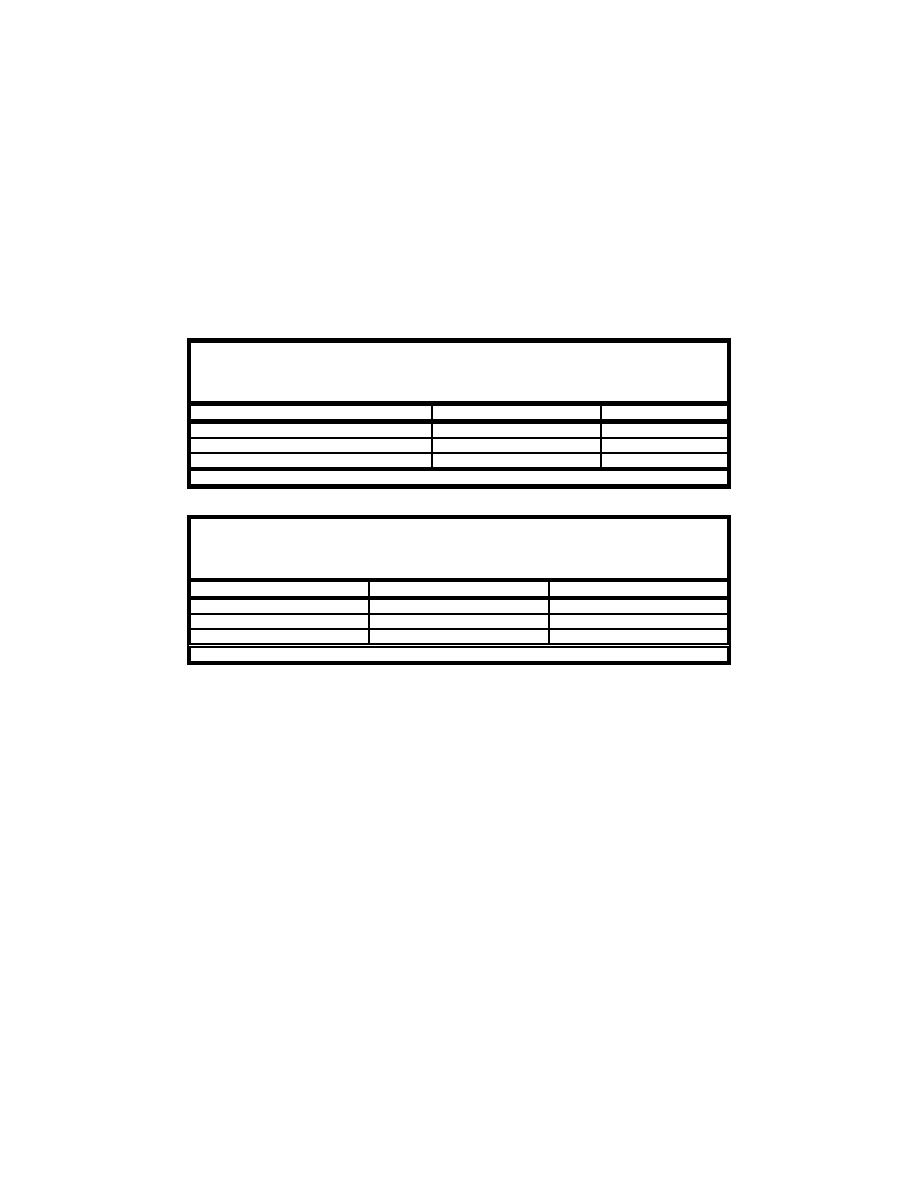 |
||
|
|
||
|
Page Title:
Table C1. Target Suspended Solids and Required Sediment for Simulated Runoff Samples from Wet Sediment |
||
| |||||||||||||||
|
|
 analysis of unfiltered runoff samples or from the computations described in
Section 5.3.1.
Step 2a. Wet Sediment Evaluation. The wet sediment evaluation begins
with the placement of replicate wet sediment samples into 4-L glass bottles using
the oven-dry weight equivalents shown in Table C1. Three replicates of each
sediment to water ratio is prepared. Deionized water is added to bring total
sample volume to four liters. The containers are placed horizontally on a
mechanical shaker and agitated for 1 hr to ensure complete suspension of
sediment and sediment to water contact. It is advised to tape the caps to prevent
leakage. After shaking is complete the sample is filtered using appropriate for
Table C1
Target Suspended Solids and Required Sediment for Simulated
Runoff Samples from Wet Sediment
Sediment / 1 L, g1
Sediment: Water Ratio
Suspended Solids, mg/L
1:2,000
500
0.5
1:200
5,000
5
1:20
50,000
50
1
Oven-dry weight equivalent of wet sediment.
Table C2
Target Suspended Solids and Required Sediment for Simulated
Runoff Samples from Dry Sediment
Suspended Solids, mg L-1
Sediment / 1 L, g1
Sediment: Water Ratio
1:20,000
50
0.05
1:2,000
5,00
0.5
1:200
5,000
5
1
Oven-dry weight.
the contaminants in question. Organic contaminants are pre-filtered through a
Whatman GF/D 2.7-um glass fiber filter followed by a Whatman GF/F
0.7-um glass fiber filter or equivalent. Inorganic contaminants are in addition
filtered through a MF-Millipore 0.45-um membrane filter or equivalent.
Preservation of filtered samples is accomplished according to U.S. Environ-
mental Protection Agency (USEPA) standards appropriate for each contaminant.
Step 2b. Dry Sediment Evaluation for Organics and Nutrients. The
purpose of the dry portion of the SLRP is to predict the long-term effects of
drying and oxidation of dredged material on movement of contaminants from
upland CDFs. For the determination of all contaminants except priority metals,
three replicates of air-dried sediment from Step 1b are weighed to the nearest
0.001 g and placed in 4-L bottles as shown in Table C2. An amount of deionized
water equal to the total volume required minus the sediment weight is added to
the bottle and capped. Sediment samples are collected from the sample bucket
and placed in a drying oven at 90 EC for 48 hr. Place the oven-dried sediment in
the 4-L bottles and incrementally add the 30 percent H2O2 until the full volume
required for oxidation has been added. Reactions to the H2O2 vary by sediment
and some may be subject to boil-over. For the 500- and 50-mg l-1 samples,
smaller containers, such as 500- and 50-mL glass beakers, respectively, should
C5
Appendix C Test Procedures for Surface Runoff Discharges
|
|
Privacy Statement - Press Release - Copyright Information. - Contact Us - Support Integrated Publishing |